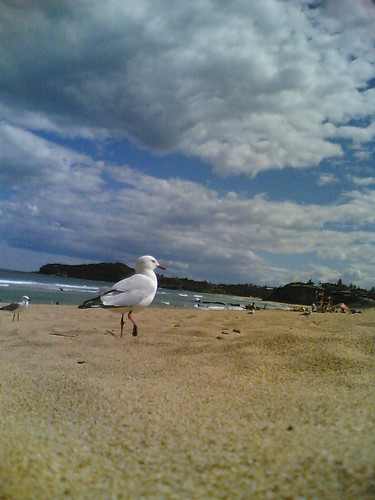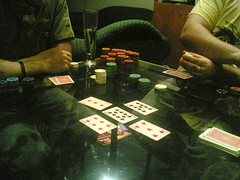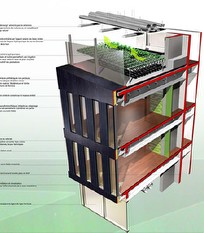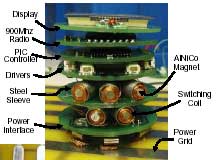Culture club
With drought, rising oil prices and global warming dominating headlines, people are turning to permaculture for answers, Simon Webster writes.
PENNY Pyett is at her Marsfield home assembling showbags for this weekend's Gardening Australia festival. "There are organic seeds," she says, "vetch and millet, green cleaning products ... Hang on a minute, a crow's trying to attack my duck."
Pyett's modest weatherboard is dwarfed by neighbouring "mcmansions". She has two ducks in her backyard, six chickens, six quails and three guinea pigs.
There's not much lawn to mow. Instead there's a jungle of bananas, oranges, peaches and passionfruit. Sweet potatoes ramble. Ponds overflow with water chestnuts and glossy taro leaves.
The garden looks random but has been carefully planned: chickens run in the food forest, fertilising trees, keeping down pests such as fruit fly, and getting fed by the forest in return. In summer grapes clamber under eaves, shielding the deck from the sun; in winter they lose their leaves and let the sun through.
Pyett, 45, is a teacher and practitioner of permaculture, a design system for sustainable living. Devised in Australia, it has been advocating backyard organic food, energy-efficient homes and less harmful agricultural methods since the 1970s. And an increasing number of people are starting to listen.
Plenty of permaculture methods have already been adopted by the mainstream. Gardeners mulch their gardens to save water and improve their soil; they fight pests with companion planting rather than chemicals that obliterate everything in their path; business is booming in the supply of water tanks and grey water systems.
As awareness of environmental issues grows, so do the ranks of permaculturists. Rising oil prices, water shortages and food safety are in the newspapers almost every day. Crucially, permaculture doesn't just diagnose what's wrong with the world - it suggests how to fix it.
Pyett's introductory courses at Ryde TAFE and the Sustainable Design Company in Curl Curl teach students how to establish productive ecosystems on their acreages, backyards or balconies. She also helps run Permaculture North, a group of "permies" based north of the Harbour Bridge.
The group had been plugging away for more than 10 years with little increase in numbers. Then, in the past year, membership more than doubled. Now more than 100 people cram into a hall in Lindfield each month to hear talks, plan projects and coordinate campaigns for changes in government policy.
Pyett says permaculture's growing profile in the media has helped; since 2003 it has had a regular spot on ABC TV's Gardening Australia.
"People are essentially good and want to do the right thing by the planet," Pyett says. "When they hear about permaculture they think, this is it. It makes perfect common sense."
Perth-based Josh Byrne is Gardening Australia's permaculture expert. "There's a huge amount of interest in what I'm doing," Byrne says. "People have become aware of shortages of water, chemical use, passive solar design - these are coming into the mainstream."
The type of person doing Pyett's courses is changing. "I've seen more professional people coming through wanting a new direction in their life," she says.
Brett Hart is one of those people. A 61-year-old office administrator from Castle Cove, Hart completed Pyett's course this year, about 20 years after first seeing permaculture's co-founder, Bill Mollison, talk about the subject on television. "It takes me a long time to get round to things," Hart says. "I'm not a rabid greenie. In fact I'm an enemy of the greenies in some ways. I'm just an ordinary suburban dad. But, I've got a deep inner feeling about permaculture. I wonder what's going to happen to us on this little planet and permaculture could be an answer."
Gardening Australia editor Brodee Myers-Cooke has seen her readership change in recent years. "These new readers are health-conscious and environmentally aware," she says. "They are young families who want to grow food as a money saver but they also want to know it's healthy.
"A few years ago most laypeople wouldn't have heard of permaculture. Now you'd be hard pressed to find a person who hasn't heard of it, even if they're not sure what it is.
"People are trying it. They're excited about growing their own crops in the suburbs. People are realising their backyard is a resource."
Growing veggies is one thing, but some permaculture philosophies are more confronting: convert your car to run on vegetable oil; set up community credit unions to bypass the banks; consume less. Are people ready to accept them?
"With global warming, climate change, global dimming and the peak oil crisis we will have to make fundamental changes to the way we live," Pyett says.
"They can be forced on us or we can take them on voluntarily. People need to start practising permaculture wherever they live. It will save the planet."
THE THIRD WORLD
Canadian environmentalist David Suzuki has said: "What permaculturists are doing is the most important activity that any group is doing on the planet."
Bill Mollison describes permaculture as the world's biggest aid agency. Permaculturists travel the globe, teaching in some of the world's poorest and most inhospitable places.
Geoff Lawton, 51, of The Channon in northern NSW, is the managing director of the Permaculture Research Institute, a registered charity. He has taught in about 20 countries and is currently visiting former students in Jordan, where he has helped farmers near the Dead Sea turn their land in one of the saltiest and driest regions on earth into oases of productivity.
He says 750,000 students worldwide have taken the two-week permaculture design certificate course and permaculture is used in more than 400,000 projects in 120 countries. "It's all working as a decentralised, wild system breeding its own teachers," he says.
"We're mimicking the function of global weeds and germinating wherever there is damaged ground - and there is more all the time. In Third World countries permaculture is tried and tested fast by local people on the ground with real-time needs - which is understandable if your kids are dying."
...from smh
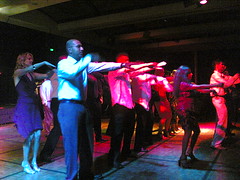
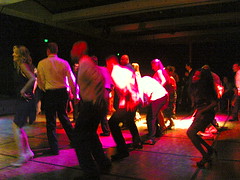
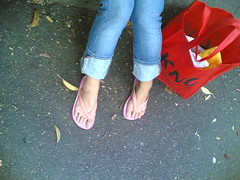
 Over the last few decades, miners in South Africa have been digging up
Over the last few decades, miners in South Africa have been digging up  In 1938, an archeological expedition led by Dr. Chi Pu Tei into the Baian-Kara-Ula mountains of China made an astonishing discovery in some caves that had apparently been occupied by some ancient culture. Buried in the dust of ages on the cave floor were
In 1938, an archeological expedition led by Dr. Chi Pu Tei into the Baian-Kara-Ula mountains of China made an astonishing discovery in some caves that had apparently been occupied by some ancient culture. Buried in the dust of ages on the cave floor were 



 There are artifacts belonging to ancient Egyptian and Central American cultures that
There are artifacts belonging to ancient Egyptian and Central American cultures that 
 Fossils, as we learned in grade school, appear in rocks that were formed many thousands of years ago. Yet there are a number of fossils that just don't make geological or historical sense. A fossil of a
Fossils, as we learned in grade school, appear in rocks that were formed many thousands of years ago. Yet there are a number of fossils that just don't make geological or historical sense. A fossil of a  Humans were not even around 65 million years ago, never mind people who could work metal. So then how does science explain
Humans were not even around 65 million years ago, never mind people who could work metal. So then how does science explain 